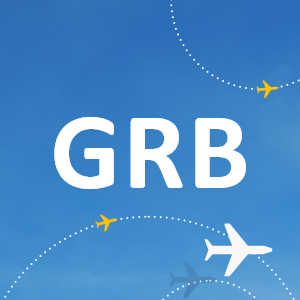
Green Bay Austin Straubel International Airport (GRB) serves Northeastern Wisconsin. The City of Green Bay, on the western side of Lake Michigan, is the population and employment center of the metropolitan region, known for being home to its famous National Football League team and historic manufacturing base. The region is an example of one within a fragmented market where the population and total regional employment have remained relatively stable over time.

The Region and Its Economic Strengths
The Green Bay-Shawano CSA is in the eastern part of Wisconsin, approximately 130 miles north of Milwaukee. From 2008 to 2019, the population in the region grew by 6 percent, faster than that of either the state of Wisconsin (3.3 percent) or the Great Lakes states (1.4 percent). Similarly, employment growth in the region exceeded that of the state.
| 2008 | 2019 | Change # | Change % | |
|---|---|---|---|---|
| Population (000s) | 348.6 | 368.4 | 19.8 | 6% |
| Total Employment (000s) | 229.9 | 244.7 | 14.8 | 6% |
The region’s economy is anchored by its manufacturing sector, which employed over 30,000 in 2019 (almost 15 percent of total nonfarm employment). Of the region’s 30 largest employers, 12 are manufacturers. Besides paper and packaging industries, other sectors with substantial employment included health care, finance and insurance, construction, and transportation.
The figure shows the location of the airport in the region, the geographic area within a 1-hour drive of the airport, and the locations of the largest manufacturing businesses within that drive time.

The Airport and Its Service
GRB shares the Northeast Wisconsin air travel market with several other airports. These include Appleton International Airport, 33 miles to the south, and Milwaukee Mitchell International Airport, 127 miles away. A 2019 study estimated that the air service catchment area generated 1.2 million origin and destination (O&D) passengers, but that GRB captured only 16 percent of that traffic. Chicago O’Hare International Airport (ORD), 194 miles away, captured almost 40 percent of the traffic. In 2019, GRB posted a total of just under 700,000 O&D passengers.
The combination of relatively modest growth in market size, airline industry consolidation, and the proximity of alternative airports has resulted in an overall decline in capacity offered at GRB since 2008. In 2019, the total departure capacity at GRB was 33 percent lower than in 2008.
Source: Diio Schedules
Connectivity
Connectivity at GRB in 2019 was 12 percent lower than in 2008. This decline was not as steep as the decline in seat capacity (–33 percent), because GRB retained service to several key national hubs including Hartsfield-Jackson Atlanta International Airport (ATL), ORD, Minneapolis-St Paul International/Wold-Chamberlain Airport (MSP), and Detroit Metropolitan Wayne County Airport (DTW).
All else being equal, each additional seat on flights to those airports yields a higher level of connectivity than seats on flights to smaller airports with fewer onward destinations. This is why, for instance, connectivity grew by 24 percent between 2012 and 2014 even though the total seat capacity remained about the same. Between 2012 and 2014, GRB lost capacity to MSP and DTW and all services to Cleveland, but gained service to ATL, which is among the most connected airports in the world. That boosted GRB’s connectivity. In more recent years, expanded capacity to ORD as well as the reintroduction of service to Denver International Airport (DEN) has improved GRB’s connectivity. Overall, GRB’s connectivity rebounded 22 points from the worst of the post-Great Recession downturn in 2012.
Source: InterVISTAS analysis of Innovata schedule data from Diio Mi
Changes in Air Service and Economic Activity
GRB’s O&D traffic does not appear to be correlated with total local employment. Changes in one variable do not appear to be associated with changes in the other. That is, the total amount of O&D traffic at the airport does not appear to be related to total employment in the MSA/CSA or vice versa. A similar absence of relationship exists between total O&D traffic at GRB and the region’s overall population levels. Changes in the population base have not translated into changes in traffic at the airport.
Air Service Goals Tied to Business Activity
The Greater Green Bay Chamber of Commerce has an arm devoted to economic development. The Chamber’s strategic plan has 11 initiatives that are geared toward supporting economic development in the area, with one focused on enhancing transportation access and connectivity. Given the region’s economic strength in manufacturing and the need to connect products to markets, the Chamber recognizes the criticality of transportation access and connectivity.
From the perspective of foreign direct investment, Canada and Italy are the top two countries with investment in the area. Firms that have located in the area cut across several different industries, including manufacturing, paper products, food processing, and shipbuilding. These companies view the area as a prime location in which to build supply chain redundancy for their operations.
Communicating the Airport’s Economic Impact
The Wisconsin Department of Transportation performed an economic impact study of the commercial service airports in the state in 2017. GRB was estimated to generate $242.9 million in economic output in Brown County. The study estimated that the airport generated 1,633 jobs, with $68.8 million in labor income in Brown County. However, the true economic impact of commercial aviation extends beyond the airport boundaries, as aviation is a critical element of the economic activity of multiple industry sectors.
